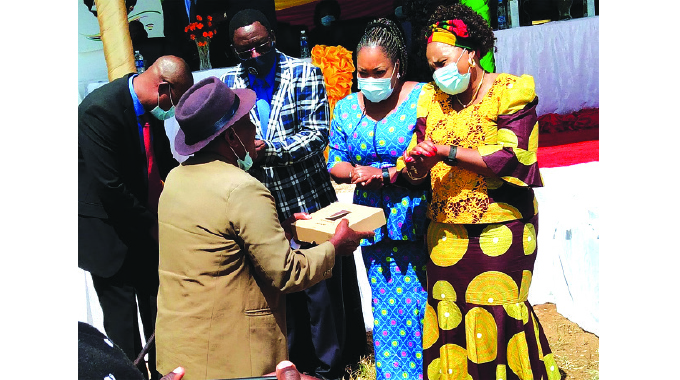The Zimbabwe Digital Broadcasting Migration Project (DTT Project) was launched for the benefit of the Zimbabwean citizens who will enjoy access the twelve (12) Free-to-Air digital television services licensed in Zimbabwe. The Minister said the Second Republic is delivering this project at the backdrop of the COVID-19 pandemic, where television and radio have been central in providing public health and safety information and running basic primary and secondary education lessons for our learners.

Minister Mutsvangwa said the Second Republic has since 2018 facilitated the installation of 18 digital television transmitters countrywide. She said, “The areas prioritized are those that were historically unserved or underserved with television services. Karoi is one of the areas. Today we are officially launching the Karoi transmitter, but there are other areas equally earmarked. Of note, we will be launching Chimanimani, a deliberate move by the Second Republic to stimulate the connectivity of that region to the mainstream economy following a series of floods, including Cyclone Idai that had cut off the area from the rest of the country. The complete list of areas has: Mutorashanga, Chivhu, Binga, Mudzi, Gokwe, Gweru, Kotwa, Karoi, Gwanda, Kamativi, Kadoma, Harare, Chiredzi, Chimanimani, Nyanga, Kenmaur, Mutare and Bulawayo.”
She said the US$125 million project has to date achieved several behind the scenes works in digitalizing mass media infrastructure at the national broadcaster , ZBC, national signal carrier- Transmedia Corporation and the industry regulator, the Broadcasting Authority of Zimbabwe (BAZ). She stated that as a country we have entered a communication and information age, for which there is no turning back. Just recently, we opened the airwaves. The Broadcasting Authority of Zimbabwe has licensed several Campus Radio stations, with Great Zimbabwe University going on-air last year and others following suit. The above is in line with Education 5.0, spearheaded by the Ministry of Higher and Tertiary Education, to capacitate our learners in Journalism and Engineering with practical learning. In addition, several Community Radio stations and 6 private television stations have also been licensed a development which is in line with Devolution Agenda to stimulate development dialogue in communities.”
